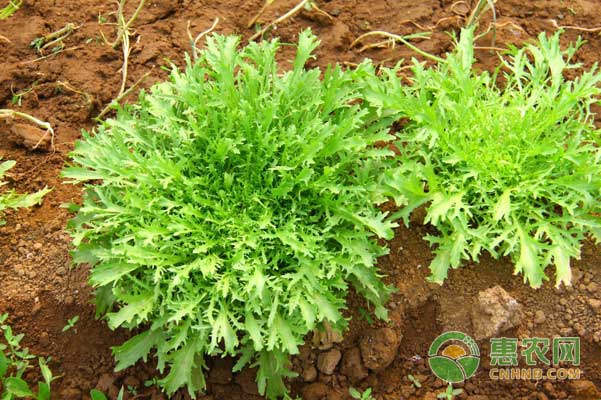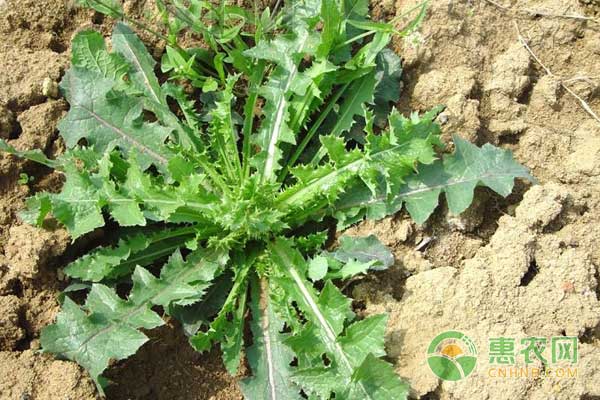How to grow bitter vegetables? Chicory cultivation technique
Chicory is a kind of wild vegetables. In addition to the harsh climate and soil conditions, the bitter vegetables are almost all over the provinces. The leaves of the borage have a bitter taste and have the effect of lowering blood pressure. They can also be used as a green feed for poultry farming and have a wide range of uses.
First, the variety selection
The best bitter
The best bitterness has strong cold tolerance, strong adaptability, less premature disease, good quality and slightly bitter taste. The variety can be softened and cultivated, and the heart leaf can be changed to light yellow, so that the product can be added value.
2. Flowering leaves
The growth period of the leaves is 80-90 days. It is cold-tolerant, heat-resistant, poor-tolerant, and has fewer pests and diseases. It can be planted in spring and autumn in the south of the Yangtze River.

Second, the cultivation season
The bitterness is like cold and cold. After the vernalization, the low temperature is easy to be extracted, flowered, and seeded under high temperature and long daylight conditions. Therefore, cultivation should avoid summer. The greenhouses, greenhouses and shading facilities can be used to achieve annual supply and achieve high economic benefits.
Third, cultivate strong seedlings
Seed treatment
The cultivation of borage is generally carried out by seedling transfer method, using 265 m 2 for 25 g of seed, drying in the sun for 5-6 hours before sowing, or 50% carbendazim WP with seed dry weight 0.3%. .
2. Sowing
(1) The soil of the nutrient soil is selected from the garden soil which has not been planted with cruciferous vegetables for more than three years, and the fermented and fermented cattle and horse manure is in a ratio of 3:1, and the nitrogen, phosphorus and potassium ternary compound fertilizer is added per cubic meter. 1.5 kg, bio-organic fertilizer 2 kg, 50% carbendazim WP 8-10 g fully mixed and sieved, filled with nutrients for use.
(2) Seeding selection For more than three years, no plots of cruciferous vegetables have been planted for seedbeds. The seeds of the borage are small and weak. Therefore, the land should be leveled. Before the tillage, the base fertilizer should be applied, and the sensation is good to ensure that the seedlings are neat, the seedlings are full, and the seedlings are strong. Spring sowing is suitable in the northern region; in the south, spring and autumn can be planted. However, in order to use winter leisure fields to solve the shortage of winter and spring green forages, it is better to use autumn sowing; in the south of the tropical tropics, all seasons can be sown. The sowing method is better by stripping, and it can also be sown or sown. Generally, the seeding amount of 667 m 2 is 0.75~1 kg, the row spacing is 20~30 cm, and the sowing depth is 2~3 cm. In areas with poor protection, it should be filled in time after planting. Any spring broadcaster must strengthen the work of eliminating miscellaneous; few weeds are planted in autumn, and weeds are generally not needed in the seedling stage. After the spring returns to spring, the weeds grow a lot, except weeds can be used twice. Before planting, the seedbed is poured with water at the bottom of the seedbed. After the water is infiltrated, the seed is sown. Generally, 5 grams of seeds are required per square meter, and 0.5 cm thick fine soil is covered after sowing. In order to keep the soil moist overlying the mulch, 70% of the seedlings are removed after the arching. Mulch. It can be released in 3~5 days, and can be transferred into the nutrient bowl when the leaves are 2 leaves.
(1) Daejeon preparation
Before planting, the colonized field will clear the residue of the crops in the field and carry out the deep-turning of the land. Conditionally take high temperature suffocation disinfection. The borage is cultivated by ridge or sorghum, and the row spacing is 35 cm and the ridge height is 15 cm. Combined with the preparation of 667 m 2 of fully-fertilized farmyard manure 5,000 kg, ternary compound fertilizer 25 kg, bacterial fertilizer 30-40 kg, and 50% phoxim emulsifiable concentrate 1000 times solution to spray underground ditch to control underground pests.
(2) Colonization method
When the seedling age is 35~40 days, 5~7 true leaves are planted, the planting density is 35 cm, and the plant spacing is 25 cm. The depth of planting is just buried in the soil. Watering immediately after planting to promote slow seedlings.
4. Field management
(1) Temperature management
The bitterness is cool, the suitable temperature range is 10~25°C, and the most suitable temperature is 15~18°C. The management should pay attention to cooling and winter insulation in summer and autumn. The protective floor uses a functional film with good light transmission. Keep the membrane surface clean during the winter, uncover the insulation cover during the day, and hang the reflective curtain at the back of the solar greenhouse to maximize the light intensity and time. Shade and cool down in summer and autumn.

(2) Water and fertilizer management
After planting, you must pour enough water to cool the seedlings. Pay attention to the cessation of watering 3 to 4 days before harvesting for storage and transportation after harvest. Fertilizer does not require top dressing during the growth period under the premise of applying the base fertilizer. However, in order to improve the quality of vegetables, root dressing can be carried out regularly, that is, humic acid leaf fertilizer is sprayed once every 7 to 10 days, and 10 grams per square meter of CO2 gas fertilizer can be applied in the winter greenhouse. If the bottom fertilizer is insufficient, it can be combined with irrigation water 667 m 2 and 10~~15 kg bio-fertilizer in 5~8 leaves.
(3) Other management
After the seedlings are slowed down, the old leaves, diseased leaves and yellow leaves on the ground should be removed in time. If the seedlings are lacking, the seedlings should be replenished in time, and the weeds in the field should be removed. According to the market conditions and the timing of the crops, the harvest should be harvested in the morning to prevent the leaves from wilting. It is better to receive 3~4 春 in spring and 5~6 秋 in autumn. The autumn broadcaster can harvest 1~2 times in winter and 3~4 times after returning to green. If the leaf plexus is used, it must be developed well in the root system and form a large leaf plexus. The height of the stubble is 1~2 cm; after harvesting, the stubble should not be less than 3 cm; the hay is used for drying or used as a silage material, and the cut is better at the flower bud stage. It is best to apply a proper amount of fertilizer after each harvest.
The above is the main point of artificial cultivation techniques of bitter vegetables. If you want to know more about planting techniques, please pay attention to the Hui Nong School!
GMP Certificated Immune Globulin Injection Supplier in China
Hepatitis B Immunoglobulin,Hep B Immunoglobulin,Hepatitis B Immunoglobulin Vaccine,Hepatitis Immune Globulin
FOSHAN PHARMA CO., LTD. , https://www.foshanpharma.com